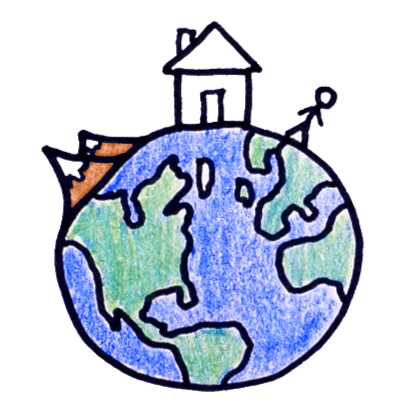2019-08-14
[public] 206K views, 8.06K likes, dislikes audio only
Thanks to the University of Minnesota for sponsoring this video! http://twin-cities.umn.edu/
Observing the effects of microbes using satellites can give us all sorts of useful information about life on Earth ... and other planets too.
Thanks also to our Patreon patrons https://www.patreon.com/MinuteEarth and our YouTube members.
And thanks to researchers from the University of Wisconsin and the University of Nebraska-Lincoln who help generate airborne data used in Professor Jeannine Cavender-Bares' studies.
___________________________________________
To learn more, start your googling with these keywords:
Microbe - an organism (such as a bacterium or protozoan) of microscopic or ultramicroscopic size.
Remote sensing - the scanning of the earth , especially by satellite or high-flying aircraft, in order to obtain information about it.
Pathogen - a bacterium, virus, or other microbe that can cause disease.
Chlorophyll - a green pigment, present in all green plants and in cyanobacteria, responsible for the absorption of light to provide energy for photosynthesis.
Phytoplankton - photosynthesizing microscopic biotic organisms that inhabit the upper sunlit layer of almost all oceans and bodies of fresh water on Earth.
Cholera - an infectious and often fatal bacterial disease of the small intestine, typically contracted from infected water supplies and causing severe vomiting and diarrhea.
Evaporite - a natural salt or mineral deposit left after the evaporation of a body of water.
Microbially induced sedimentary structures (MISS) - primary sedimentary structures formed by the interaction of microbes with sediment and physical agents of erosion, deposition, and transportation.
___________________________________________
Subscribe to MinuteEarth on YouTube: http://goo.gl/EpIDGd
Support us on Patreon: https://goo.gl/ZVgLQZ
And visit our website: https://www.minuteearth.com/
Say hello on Facebook: http://goo.gl/FpAvo6
And Twitter: http://goo.gl/Y1aWVC
And download our videos on iTunes: https://goo.gl/sfwS6n
___________________________________________
Credits (and Twitter handles):
Script Writer and Video Narrator: Julián Gómez (@thejuliangomez)
Script Editor: Alex Reich (@alexhreich)
Video Illustrator: Arcadi Garcia Rius (@garirius)
Video Director: Julián Gómez, David Goldenberg
With Contributions From: Henry Reich, Kate Yoshida, Ever Salazar, Peter Reich, David Goldenberg, Julián Gómez, Sarah Berman
Music by: Nathaniel Schroeder: http://www.soundcloud.com/drschroeder
___________________________________________
References:
Mirik M, Jones DC, Price JA, Workneh F, Ansley RJ, Rush CM. Satellite remote sensing of wheat infected by wheat streak mosaic virus. Plant Disease. 2011 Jan;95(1):4-12.
Lowe A, Harrison N, French AP. Hyperspectral image analysis techniques for the detection and classification of the early onset of plant disease and stress. Plant methods. 2017 Dec;13(1):80.
Lobitz B, Beck L, Huq A, Wood B, Fuchs G, Faruque AS, Colwell R. Climate and infectious disease: use of remote sensing for detection of Vibrio cholerae by indirect measurement. Proceedings of the National Academy of Sciences. 2000 Feb 15;97(4):1438-43.
de Magny GC, Mozumder PK, Grim CJ, Hasan NA, Naser MN, Alam M, Sack RB, Huq A, Colwell RR. Role of zooplankton diversity in Vibrio cholerae population dynamics and in the incidence of cholera in the Bangladesh Sundarbans. Appl. Environ. Microbiol.. 2011 Sep 1;77(17):6125-32.
Colwell RR. Global climate and infectious disease: the cholera paradigm. Science. 1996 Dec 20;274(5295):2025-31.
Lausch A, Erasmi S, King D, Magdon P, Heurich M. Understanding forest health with remote sensing-part II—a review of approaches and data models. Remote Sensing. 2017 Feb 5;9(2):129.
Meng J, Li S, Wang W, Liu Q, Xie S, Ma W. Mapping forest health using spectral and textural information extracted from spot-5 satellite images. Remote Sensing. 2016 Aug 31;8(9):719.
Baldridge AM, Farmer JD, Moersch JE. Mars remote‐sensing analog studies in the Badwater Basin, Death Valley, California. Journal of Geophysical Research: Planets. 2004 Dec;109(E12).
Barbieri R, Stivaletta N. Continental evaporites and the search for evidence of life on Mars. Geological Journal. 2011 Nov;46(6):513-24.
Crowley JK, Hook SJ. Mapping playa evaporite minerals and associated sediments in Death Valley, California, with multispectral thermal infrared images. Journal of Geophysical Research: Solid Earth. 1996 Jan 10;101(B1):643-60.
Noffke N. Ancient sedimentary structures in the [less than] 3.7 Ga Gillespie Lake Member, Mars, that resemble macroscopic morphology, spatial associations, and temporal succession in terrestrial microbialites. Astrobiology. 2015 Feb 1;15(2):169-92.
Landis GA. Searching for life: the case for Halobacteria on Mars. InAIP Conference Proceedings 2001 Feb 2 (Vol. 552, No. 1, pp. 25-28). AIP.
https://www.patreon.com/minuteearth
/youtube/channel/UCeiYXex_fwgYDonaTcSIk6w
https://patreon.com/minuteearth
/youtube/video/4DF94Wvtekk

